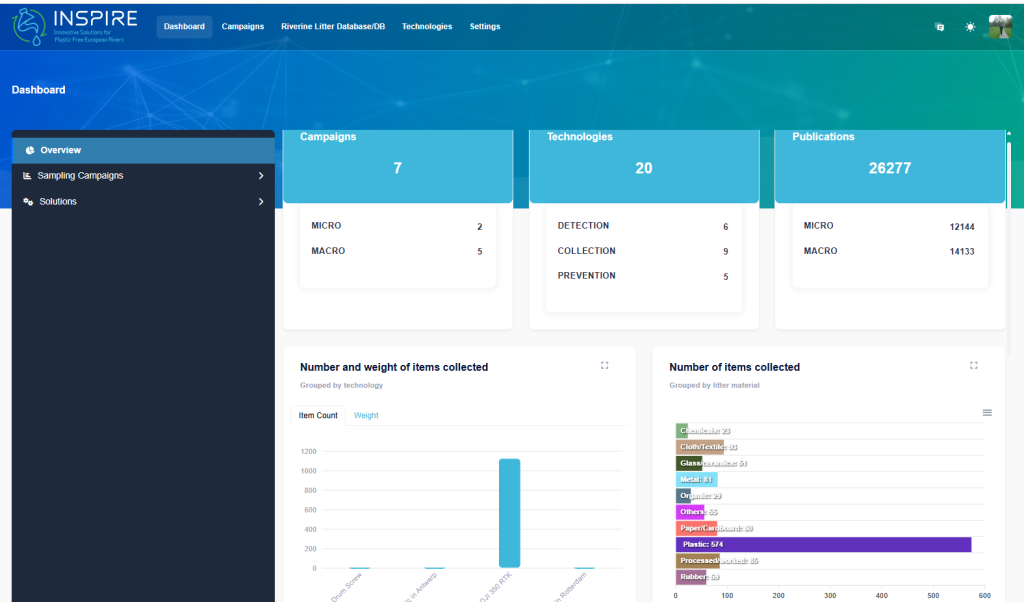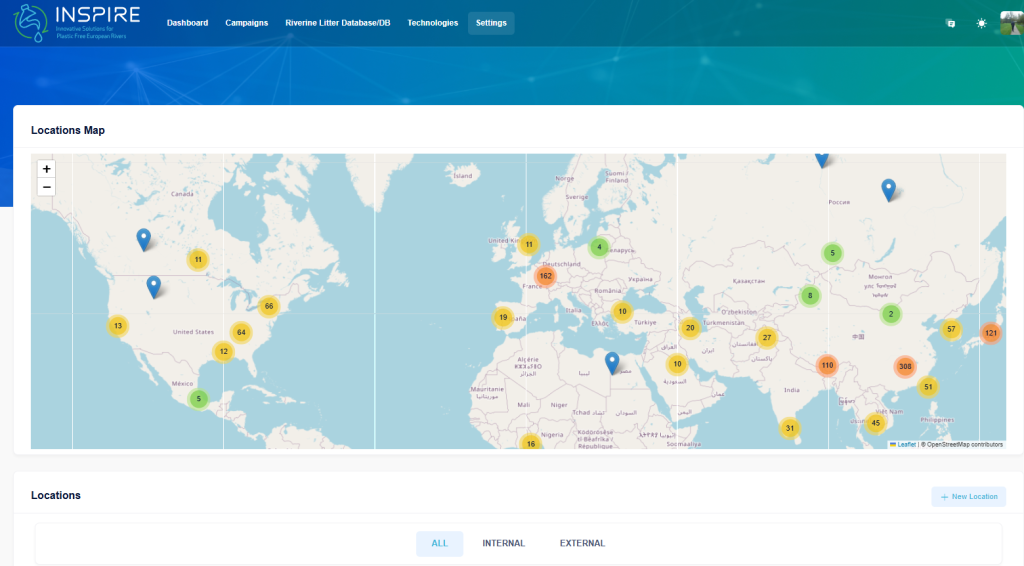The INSPIRE project has reached a major milestone with the submission of Deliverable D4.4: the Impact Evaluation Dashboard—a powerful new tool designed to track and communicate the project’s efforts to combat riverine litter.
This web-based platform brings together data from across the project to monitor, evaluate, and visualise activities related to litter detection, collection, and prevention in rivers and waterways. It offers both a user-friendly public interface and a professional workspace for scientists and researchers.

The dashboard acts as the central hub for INSPIRE’s data, combining insights from macro-, meso-, and microlitter monitoring (WP1), as well as technology benchmarking and efficiency evaluation (WP2). It supports strategic decision-making through structured outputs and visual summaries that help identify what’s working—and where improvements can be made.
Key Features Include:
- Real-time data from deployed sensors and technologies
- AI evaluation tools focused on fairness and robustness of detection algorithms
- Meteorological integration to provide environmental context
- Interoperability with external scientific platforms like EMODnet
- Automated telemetry tracking, including energy and performance metrics
- Decision-support layer powered by probabilistic models to guide river management
Designed in line with the FAIR principles (Findable, Accessible, Interoperable, and Reusable), the dashboard also supports the long-term preservation and sharing of datasets, aligning with the European Digital Twin of the Ocean (EDITO) initiative.

For researchers, it offers enhanced access to monitoring datasets and scientific outputs. For the public, it provides a visually engaging overview of the project’s impact, helping raise awareness and support for cleaner waterways.
By aiming to automate over 70% of its data processing, publish datasets in open repositories like Zenodo, EMODnet, or the Marine Data Archive, and engage over 5,000 users through its public interface, the Impact Evaluation Dashboard represents a significant step forward in how we understand and tackle aquatic pollution.

